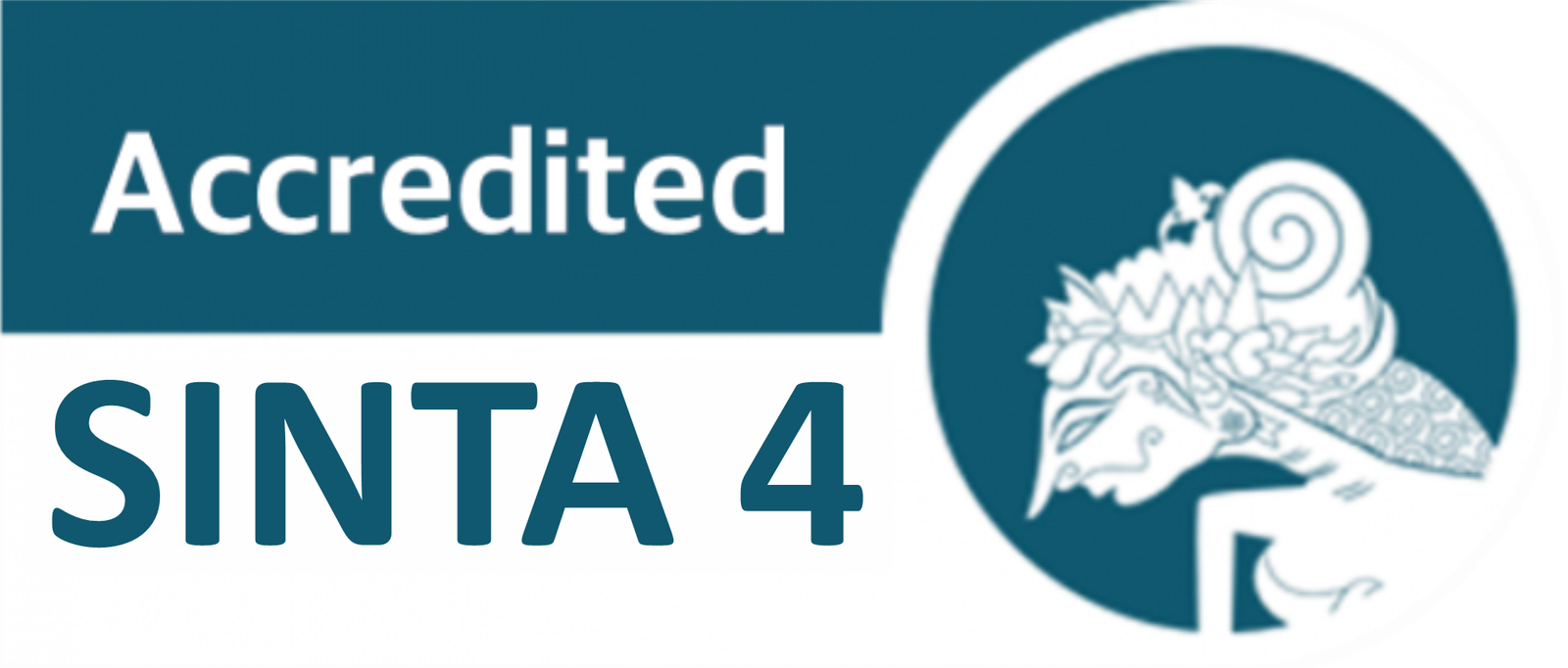The Effectiveness of the Tamyiz Method in Improving Understanding of Arabic Vocabulary in Junior High Schools
DOI:
https://doi.org/10.30605/jsgp.7.1.2024.3614Keywords:
Tamyiz Method, Arabic Vocabulary, Junior High SchoolsAbstract
Metode Tamyiz is a practical method to help translate Arabic vocabulary. The purpose of this study was to determine the effectiveness of the tamyiz method in improving the understanding of Arabic vocabulary at SMP Muhammadiyah 6, Jakarta. This study used a type of quantitative research with experimental design techniques (pre-experimental model, one-group pretest-posttest). The research was conducted in March 2024 at SMP Muhammadiyah 6, Jakarta. The population in this study was grade VIII students at SMP Muhammadiyah 6 Jakarta, totaling 30 people using saturated sample techniques. The data collection technique used in this study was pre- and post-test. And the technique to analyze the data uses normality tests, effectiveness tests, and paired sample t-tests with a significance level of 5%. The results of this study found that there was an increase in students' understanding of Arabic vocabulary using the tamyiz method. Therefore, it can be concluded that the tamyiz method is quite effective as a learning method that can significantly improve the understanding of Arabic vocabulary of grade VIII students at SMP Muhammadiyah 6 Jakarta.
Downloads
References
Ahyat, N. (2017). Metode Pembelajaran Pendidikan Agama Islam. Edusiana : Jurnal Manajemen Dan Pendidikan Islam, 4(1), 24–31. https://doi.org/10.30957/edusiana.v4i1.5
Aidah, A. N., Hidayat, A. F. S., & Annisa, M. N. (2023). Pengaruh Metode Tamyiz terhadap Penguasaan Kosakata Mata Pelajaran Bahasa Arab Siswa Kelas V SDI Al-Azhar 47 Samarinda. Borneo Journal of Islamic Education, 3(1), 101-116. http://journal.uinsi.ac.id/index.php/bjie/article/view/6468
Asiah, S. (2016). Efektivitas Kinerja Guru. TADBIR: Jurnal Manajemen Pendidikan Islam, 4(2), 1-11.
Ayu, D., Maharani, I., & Siswadi, S. (2024). Upaya Meningkatkan Kemampuan Pemahaman Konsep Matematika Dengan Metode Example Non Examples. OMEGA: Jurnal Keilmuan Pendidikan Matematika, 3(1), 8-14. https://doi.org/10.47662/jkpm.v3i1.385
Carter, M. G. (2017). The Origins of Arabic Grammar. In The Early Islamic Grammatical Tradition (pp. 1-26). Routledge.
Christina, L. V., & Kristin, F. (2016). Efektivitas Model Pembelajaran Tipe Group Investigation (Gi) Dan Cooperative Integrated Reading and Composition (Circ) Dalam Meningkatkan Kreativitas Berpikir Kritis Dan Hasil Belajar Ips Siswa Kelas 4. Scholaria : Jurnal Pendidikan Dan Kebudayaan, 6(3), 217. https://doi.org/10.24246/j.scholaria.2016.v6.i3.p217-230
Dodego, S. H. A. (2022). Pentingnya Penguasaan Bahasa Arab Dalam Pembelajaran Pendidikan Agama Islam. PESHUM : Jurnal Pendidikan, Sosial Dan Humaniora, 1(2), 55–70. https://doi.org/10.56799/peshum.v1i2.48
Fahmeyzan, D., Soraya, S., & Etmy, D. (2018). Uji Normalitas Data Omzet Bulanan Pelaku Ekonomi Mikro Desa Senggigi dengan Menggunakan Skewness dan Kurtosi. Jurnal VARIAN, 2(1), 31–36. https://doi.org/10.30812/varian.v2i1.331
Faiqah, N. (2017). Manajemen Pembelajaran Bahasa Arab Di Sekolah (Studi Kasus di SMK Muhammadiyah 2 Playen Yogyakarta). Jurnal At-Tafkir, X(1), 64–85.
Fauziah, F., Jamaluddin, J., & Fitriani, F. (2022). Efektivitas Metode Debat Aktif Ditinjau Dari Kemampuan Komunikasi Peserta Dididik Pada Mata Pelajaran PAI. Jurnal Inovasi Penelitian Dan Pengabdian Masyarakat, 2(1), 9–23. https://doi.org/10.53621/jippmas.v2i1.69
Fauziyyah, A., Ulfiah, U., & Hidayat, I. N. (2018). Efektivitas Metode Tamyiz terhadap Memori dalam Mempelajari Alquran pada Santri Pondok Pesantren Quran. Jurnal Psikologi Islam Dan Budaya, 1(1), 37–52. https://doi.org/10.15575/jpib.v1i1.2070
Fitriliza, & Fahmi, A. K. (2017). Peningkatan Penguasaan Kosakata Bahasa Arab Melalui Metode Contoh Morfologi (Penelitian Tindakan di Fakultas Agama Islam). Jurnal Pendidikan Islam, 8(2), 183–204. http://journal.uhamka.ac.id/index.php/jpi
Fuad, A. J. (2021). Deradicalization in Textbooks of Islamic Religious Education Material with Radicalism in Schools. Intelektual: Jurnal Pendidikan dan Studi Keislaman, 11(1), 1-16. https://doi.org/10.33367/ji.v11i1.1579
Hadi, N. (2015). Kontribusi al-Qur’an terhadap Perkembangan Bahasa Arab. El-Furqania : Jurnal Ushuluddin Dan Ilmu-Ilmu Keislaman, 1(01). https://doi.org/10.54625/elfurqania.v1i01.883
Hairani, E., Faizah, N., Muzayyanah, M., & Izzah, N. (2019). Kohesi Metode Tamyiz Dalam Pelajaran Bahasa Arab Di Pesantren Takhasus Bayt Tamyiz Indramayu. MISYKAT: Jurnal Ilmu-Ilmu Al-Quran, Hadist, Syari’ah Dan Tarbiyah, 3(2), 99. https://doi.org/10.33511/misykat.v3n2.99-124
Hartati, E. D. (2023). Implementasi Pembelajaran Bahasa Arab dengan Metode Tamyiz pada Siswa di SMP IT Al Munadi Medan. Edu Society: Jurnal Pendidikan, Ilmu Sosial Dan Pengabdian Kepada Masyarakat, 3(1), 877–882. https://doi.org/10.56832/edu.v3i1.328
Hunaidu, H., & Sabae, M. (2019). Pengaruh Penguasaan Kosakata Bahasa Arab Terhadap Kemampuan Berbahasa Arab Siswa Pondok Darul Arqam Muhammadiyah Punnia Pinrang. Al-Maraji': Jurnal Pendidikan Bahasa Arab, 3(1), 76-92. https://doi.org/10.26618/almaraji.v3i1.3653
Krisnawilujeng, K., Fatoni, A., & Sarimov, R. (2023). The Relationship Between Mastery of Nahwu Sharf and The Ability to Translate Arabic Texts. Arabi: Journal of Arabic Studies, 8(2), 183-192. https://doi.org/10.24865/ajas.v8i2.502
Kurniawan, D. T. (2014). Model Pembelajaran Berbasis Masalah Berbantuan Website Interaktif Pada Konsep Fluida Statis Untuk Meningkatkan Penguasaan Konsep Dan Keterampilan Proses Sains Siswa Kelas Xi. Jurnal Pengajaran Matematika Dan Ilmu Pengetahuan Alam, 19(2), 206. https://doi.org/10.18269/jpmipa.v19i2.462
Majid, M. F., & Rusady, A. T. (2022). Learning Arabic through the Tamyiz Online Method in a Psycholinguistic Perspective of the General Society. QALAMUNA: Jurnal Pendidikan, Sosial, dan Agama, 14(1), 719-736. https://doi.org/10.37680/qalamuna.v14i1.4801
Mamnunah, M., Abdurrahman, M., & Sopian, A. (2021). The Error Analysis of Arabic Grammar in The Kalamuna Book. Arabi: Journal of Arabic Studies, 6(2), 158-166. https://doi.org/10.24865/ajas.v6i2.351
Mantau, B. A. K., & Buhungo, R. A. (2024). The Culture and Tradition of Educational Practice In Madrasah. Tafkir: Interdisciplinary Journal of Islamic Education, 5(2), 202-216. https://doi.org/10.31538/tijie.v5i2.89
Misdar, M., & Naufal, M. (2020). Metode Tamyiz Dalam Keterampilan Bahasa Arab Santriwan (Studi Kasus Di Pondok Pesantren Muqimussunnah Palembang). Tadrib, 6(1), 62–77. https://doi.org/10.19109/tadrib.v6i1.5403
Munjin, M. (2017). Social Capital: Trust Building As a Strategy of Developing Madrasah. Al-Hayat: Journal of Islamic Education, 1(1), 40-71.
Musa, S., Kosim, A., Tulloh, R., & Lestari, A. F. (2022). Socialization of the Tamyiz Method for Islamic Religious Education Teachers. Jurnal Education and Development, 10(1), 480-485.
Noorhidayati, S., & Aziz, T. (2023). Hadith Studies in Indonesia: Vernacularization and Teaching Methods of Sahih Al-Bukhari in Traditional and Contemporary Islamic Educational Institutions. European Journal for Philosophy of Religion, 15(3), 60-80. https://doi.org/10.24204/ejpr.2023.4182
Oktaviani, M. A., & Notobroto, H. B. (2014). Perbandingan tingkat konsistensi normalitas distribusi metode kolmogorov-smirnov, lilliefors, shapiro-wilk, dan skewness-kurtosis. Jurnal Biometrika dan Kependudukan, 3(2), 127-135.
Risda. (2021). Skripsi Efektivitas Pembelajaran Jarak Jauh ( Pjj ) Pada Pendidikan Agama Islam Di Sekolah Menengah Atas Negeri 1 Sidrap Oleh. 1–118.
Roji, F., & El Husarri, I. (2021). The concept of Islamic education according to Ibn Sina and Ibn Khaldun. Nazhruna: Jurnal Pendidikan Islam, 4(2), 320-341. https://doi.org/10.31538/nzh.v4i2.1342
Rosilia, S. (2022). Penerapan Metode Tamyiz dalam Menerjemahkan Teks Bahasa Arab di MTs Al-Falah Gorontalo. Al-Kilmah, 1(1), 19-34.
Rosshandler, K. (2019). A Review of Contemporary Arabic Scholarship on the Use of Isrāʾīliyyāt for Interpreting the Qurʾan. American Journal of Islamic Social Sciences 36-2: Spring 2019, 1.
Rudibyani, R. B. (2019). Peningkatkan Keterampilan Berpikir Elaborasi dan Penguasaan Konsep Elektrolisis Siswa Melalui Discovery Learning. Jurnal Sains Dan Edukasi Sains, 2(2), 60 69. https://doi.org/10.24246/juses.v2i2p60-69
Saepurohman, A. (2021). Quality Improvement Management Al-Qu'ran in Ciamis District. Journal of Islamicate Studies, 4(2), 130-140. https://doi.org/10.32506/jois.v4i2.739
Sobieroj, F. (2016). Variance in Arabic manuscripts: Arabic didactic poems from the eleventh to the seventeenth centuries-analysis of textual variance and its control in the manuscripts (Vol. 5). Walter de Gruyter GmbH & Co KG.
Tanu, I. K. (2018). Penggunaan metode mengajar di paud dalam rangka menumbuhkan minat belajar anak. Pratama widya: jurnal pendidikan anak usia dini, 3(2). https://doi.org/10.25078/pw.v3i2.733
Ubaidillah, U., Purnawati, P., Najibah, A., & Hana, H. (2024). The Role of Parents' and Teachers' Responsibilities for Children's Education from an Islamic Perspective. International Education Trend Issues, 2(2), 125-132. https://doi.org/10.56442/ieti.v2i2.461
Wildan, K. (2019). Implementasi Metode Tamyiz Dalam Pembelajaran Baca Kitab Kuning. AL-WIJDÃN Journal of Islamic Education Studies, 4(1), 91-105. https://doi.org/10.33379/alwijdn.v4i1.301
Downloads
Published
How to Cite
Issue
Section
License
In submitting the manuscript to the journal, the authors certify that:
- They are authorized by their co-authors to enter into these arrangements.
- The work described has not been formally published before, except in the form of an abstract or as part of a published lecture, review, thesis, or overlay journal.
- That it is not under consideration for publication elsewhere,
- That its publication has been approved by all the author(s) and by the responsible authorities – tacitly or explicitly – of the institutes where the work has been carried out.
- They secure the right to reproduce any material that has already been published or copyrighted elsewhere.
- They agree to the following license and copyright agreement.
License and Copyright Agreement
Authors who publish with JSGP agree to the following terms:
- Authors retain copyright and grant the journal right of first publication with the work simultaneously licensed under Creative Commons Attribution License (CC BY-SA 4.0) that allows others to share the work with an acknowledgement of the work's authorship and initial publication in this journal.
- Authors are able to enter into separate, additional contractual arrangements for the non-exclusive distribution of the journal's published version of the work (e.g., post it to an institutional repository or publish it in a book), with an acknowledgement of its initial publication in this journal.
- Authors are permitted and encouraged to post their work online (e.g., in institutional repositories or on their website) prior to and during the submission process, as it can lead to productive exchanges, as well as earlier and greater citation of published work.













